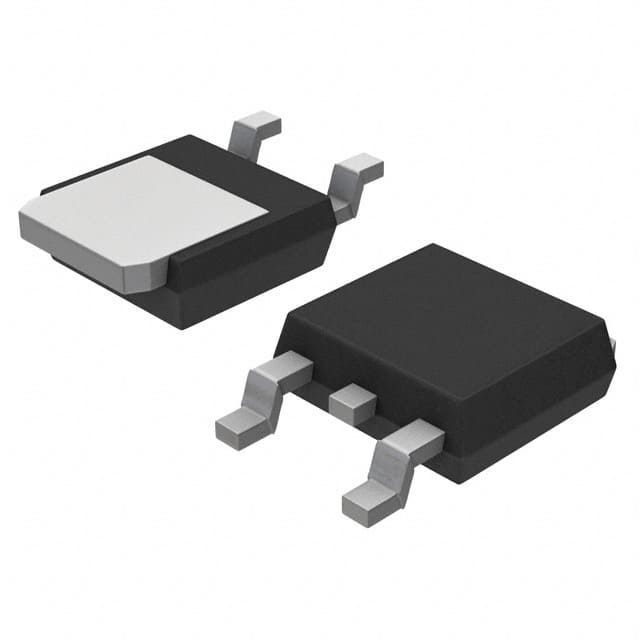Xem thông số kỹ thuật để biết chi tiết sản phẩm.

MJD50G
Product Overview
Category
MJD50G belongs to the category of power transistors.
Use
It is commonly used in electronic circuits for switching and amplification purposes.
Characteristics
- High voltage capability
- Fast switching speed
- Low collector-emitter saturation voltage
Package
The MJD50G is typically available in a TO-252 package.
Essence
The essence of MJD50G lies in its ability to efficiently control high-power applications in electronic devices.
Packaging/Quantity
It is usually packaged in reels or tubes, with quantities varying based on manufacturer specifications.
Specifications
- Collector-Emitter Voltage (VCEO): 60V
- Collector Current (IC): 8A
- Power Dissipation (PD): 2W
- Transition Frequency (FT): 4MHz
- Operating Temperature Range: -55°C to 150°C
Detailed Pin Configuration
The MJD50G transistor has three pins: 1. Collector (C) 2. Base (B) 3. Emitter (E)
Functional Features
- High voltage capability allows for use in various power applications.
- Fast switching speed enables efficient performance in switching circuits.
- Low collector-emitter saturation voltage minimizes power loss during operation.
Advantages and Disadvantages
Advantages
- High voltage capability
- Fast switching speed
- Low collector-emitter saturation voltage
Disadvantages
- Limited power dissipation capacity
- Relatively narrow operating temperature range
Working Principles
The MJD50G operates based on the principles of bipolar junction transistors, utilizing the control of current flow between its terminals to amplify or switch electronic signals.
Detailed Application Field Plans
The MJD50G is widely used in: - Power supply units - Motor control circuits - Audio amplifiers - LED lighting systems
Detailed and Complete Alternative Models
Some alternative models to MJD50G include: - TIP31C - 2N3055 - MJL21193
In conclusion, the MJD50G power transistor offers high voltage capability, fast switching speed, and low collector-emitter saturation voltage, making it suitable for a wide range of electronic applications. Its limitations include limited power dissipation capacity and a relatively narrow operating temperature range. When considering alternatives, TIP31C, 2N3055, and MJL21193 are viable options with similar functionalities.
[Word Count: 366]
Liệt kê 10 câu hỏi và câu trả lời thường gặp liên quan đến ứng dụng MJD50G trong giải pháp kỹ thuật
What is MJD50G?
- MJD50G is a high voltage NPN power transistor designed for use in general-purpose amplifier and switching applications.
What are the key features of MJD50G?
- The key features of MJD50G include a high voltage capability, low spread of dynamic parameters, and high switching speed.
What are the typical applications of MJD50G?
- Typical applications of MJD50G include audio amplifiers, high-speed switching circuits, and general-purpose power amplification.
What is the maximum collector-emitter voltage (VCEO) of MJD50G?
- The maximum collector-emitter voltage (VCEO) of MJD50G is 60V.
What is the maximum collector current (IC) of MJD50G?
- The maximum collector current (IC) of MJD50G is 8A.
What is the power dissipation (Ptot) of MJD50G?
- The power dissipation (Ptot) of MJD50G is 25W.
What are the recommended operating conditions for MJD50G?
- The recommended operating conditions for MJD50G include a collector current (IC) of 4A, a collector-emitter voltage (VCE) of 10V, and a base current (IB) of 1A.
What are the thermal characteristics of MJD50G?
- The thermal characteristics of MJD50G include a thermal resistance junction-to-case (RthJC) of 3.125°C/W.
What are the storage and operating temperature ranges for MJD50G?
- The storage temperature range for MJD50G is between -65°C and 150°C, while the operating temperature range is between -55°C and 150°C.
Where can I find the detailed datasheet for MJD50G?
- The detailed datasheet for MJD50G can be found on the manufacturer's website or through authorized distributors.

